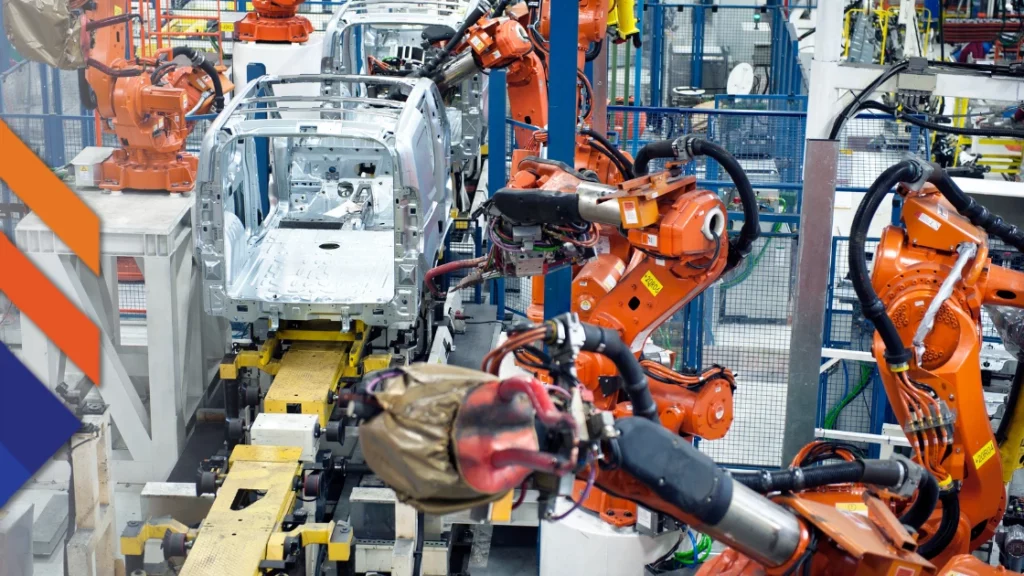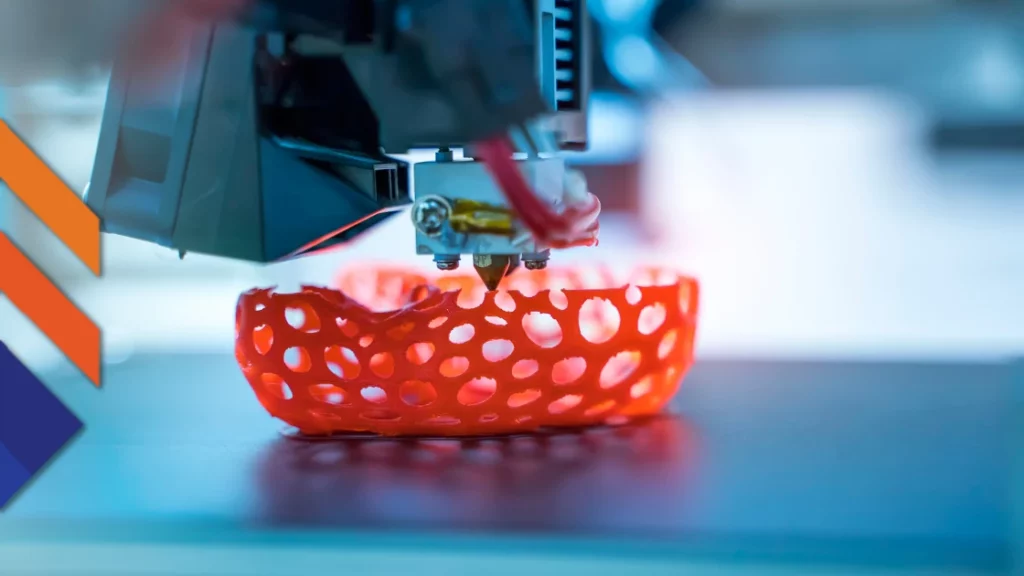Why Automation is Crucial for Manufacturing Success
Contents
Automation is no longer a novelty in manufacturing, only attainable for large operations. Automation is now an integral part of the manufacturing process and a necessity for success in today’s ever-changing market conditions. In manufacturing, this technology is becoming an essential component of production and supply chain operations, enabling small and medium enterprises (SMEs) to optimise their processes for increased efficiency and cost savings.
As automation gets cheaper and labour gets more expensive and scarce, the business case to automate only strengthens. From automated assembly lines to robotic arms, the manufacturing industry is transitioning towards using robotics and automation to accelerate production, boost efficiency, and increase accuracy.
One of the most critical aspects of manufacturing is having inventory control so products can be manufactured, stocked, and delivered promptly; otherwise, your robotic arms are just high-fiving each other, arm wrestling, or waiting for something to do. A Warehouse Management System (WMS) can provide real-time insight into inventory levels and allow manufacturers to get the most out of their assets.
Automation technology found in manufacturing
Automation encompasses a wide range of processes that help reduce the time, effort, and cost of production. Automated production can help reduce labour costs, streamline processes, improve quality control and create a safer, more efficient work environment for employees. Common types of automation used in manufacturing include robotic arms, automated assembly lines, CNC machining centres, 3D printing machines, and automated storage and retrieval systems.
Robotic Arms are industrial robots that automate tasks requiring precision and accuracy. They are typically used in the automotive, electronics, aerospace, and food industries but are becoming more commonplace for other material-handling operations. These machines perform pick-and-place, labelling, inspection, and material handling tasks.
Robotic arms can also increase operational efficiency by streamlinig assembly-line production, packaging, and palletising products.

Automated Assembly Lines are a revolutionary way of improving production processes. Automated assembly lines combine the power of robotics, tools, and conveyors in an orchestrated sequence to transform raw materials into finished goods with remarkable accuracy, speed, quality, and consistency.
This technology is revolutionising the manufacturing industry by providing efficient means of creating high-quality goods while reducing the need for manual labour.
Computer Numerical Control (CNC) machines are automated by using computers and computer-aided manufacturing (CAM) programs. These machines range from milling and lathe machines to routers, welders, grinders, laser or waterjet cutters, sheet metal stamping machines, and robots.
Through these programs, a manufacturer can control and automate the movements of their machine with extreme precision. This type of automation is beneficial in mass production scenarios where accuracy is vital, and human error is a common issue.
3D Printing or Additive Manufacturing refers to techniques used to create three-dimensional objects from a digital file. These machines, also called 3D printers, work by layering materials such as plastics, metals, and composites on top of each other to build an object layer by layer. This process allows for highly customised products with less overhead costs than traditional manufacturing methods.

Automated Storage and Retrieval Systems (AS/RS) are computer-controlled systems that help manufacturers improve their storage and retrieval processes. These systems use sensors, robotics, and software to store, retrieve and transport goods within a warehouse with accuracy and speed. By automating the movement of goods in a warehouse, these systems can increase productivity and synchronise operations for maximum efficiency in the manufacturing process.
Automation is a powerful tool that can help manufacturers increase efficiency while reducing labour costs and improving safety. However, it is essential to note that automation alone cannot guarantee success in the manufacturing industry. Automation must be paired with reliable inventory control systems such as a Warehouse Management System (WMS) to maximise production output.
A WMS ensures you get the most out of your automated manufacturing technology
When running a manufacturing operation, proper forecasting and inventory management are essential to ensure everything stays on track. Unfortunately, disruptions in the supply chain or discrepancies with inventories can quickly derail crucial processes. To overcome these issues, manufacturers should consider integrating automated technologies with an efficient WMS.
Datapel’s WMS helps manufacturers gain real-time insight into their inventory levels, allowing them to make better decisions about when and how much of the right product to manufacture, stock, and deliver.
The use of automation technology within Datapel’s WMS can improve manufacturing performance in many ways, from production planning and scheduling to reservations and holds on raw materials.
Depending on the industry, stock rotation may be necessary for production inputs to ensure requirements are met and the product isn’t going to waste. Datapel can help manufacturers create highly configurable work orders with detailed instructions and automate the creation of work orders based on demand or available components.
The ability to quickly recall and traceability of products is another benefit of automating production processes in our WMS system. The Datapel WMS gives manufacturers detailed tracking information about each product created—from raw materials used to where and how it was produced—helping to ensure product quality while meeting safety standards.
Your manufacturing processes depend on accuracy and consistency. Combining automation with a reliable WMS ensures your operations stay lean while increasing production output. Investing in automation technology and integrating it with a WMS gives you greater control of the entire manufacturing process.
Conclusion
Automation can help manufacturers efficiencies, reduce labor costs, increase accuracy, and create a more safe and more reliable work environment for employees. This technology enables manufacturers to streamline operations and get the most out of their assets. By leveraging the power of automation technology, manufacturers can remain competitive in an ever-changing market where available labor remains scarce.
In conclusion, automation is an essential tool for manufacturers looking to increase efficiency, reduce labor costs, and improve safety in their operations. When manufacturers pair their automation technology with Datapel’s WMS, they ensure their production process is smooth and steady.

In my role, I oversee the development of insightful blogs that delve into the intricacies of warehouse management. Each piece reflects my dedication to empowering businesses through informative content. Through my team’s extensive experience in the industry, we aim to bring clarity to the complexities of WMS, helping businesses make informed decisions.
Join me on a journey through the ever-evolving landscape of warehouse technology as we explore the latest trends, industry insights, and practical tips to streamline your operations. Feel free to connect, and let’s embark on a collaborative exploration of how WMS can redefine your business efficiency.
Cheers to innovation, efficiency, and the exciting world of warehouse management!







